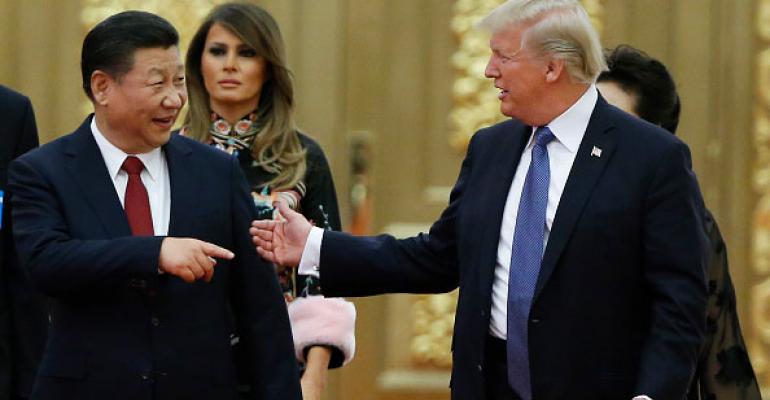Believe it or not, the progress made between the United States and China at the G20 summit in Osaka, Japan, on June 28-29 will likely have ramifications for the meeting, incentive, and trade show industry. Specifically, if U.S. President Donald Trump is not satisfied by talks with Chinese President Xi Jinping and the two countries’ trade representatives, he’s vowed to extend 25-percent tariffs to many more Chinese goods besides those on the list as of June 15. So in addition to presently affected items such as wearables made from cotton, silk, and leather and all types of luggage and handbags, tariffs could possibly go from 10 percent to 25 percent as soon as July 1 on all apparel, footwear, manufactured textile products; electronics such as laptops, tablets, and USB drives; and other goods preferred by event planners.
One potential outcome: Planners and exhibitors for business events taking place in the busy autumn season, as well as planners of incentives taking place in early 2020, could blow through their budgets for merchandise used as giveaways and gifts for participants.
Kim Todora, a spokesperson for Promotional Products Association International, notes that higher merchandise costs could become a long-term situation due to tariffs. “The only guidance business leaders have received from the White House and cabinet officials regarding the duration of the trade war and any options for mitigating impacts is that they should consider diversifying their supply chains to find alternative sourcing options outside of China,” she told MeetingsNet. “Bangladesh, Vietnam, and India are probably the top sourcing alternatives in Asia. But the relaxed duties that were available for Indian products will probably change in the coming weeks, which means higher costs for items from India. On the other hand, tariffs on Mexican imports have been indefinitely suspended, and Mexico has been viewed as a sourcing alternative to China and recently replaced China as the U.S.'s biggest trading partner. This may offer another alternative sourcing option.”
One other bit advice for planners: “If they're considering items that are named on [the larger proposed list of Chinese products], consider trying to stock up on those items before [a higher rate] goes into effect.”
Joe Jones, president of Mojo Incentives in Dayton, Ohio, says that planning gift purchases for big groups has become more challenging in recent months. “Anything that clients want from China, we have to divulge up front what the pricing could possibly be going forward. We would never take on an event without a purchase order, and that order would have to have a tariff allocation line. We must make event clients aware of what is possible in terms of higher costs; this is uncharted territory because we have not had to deal with tariffs at this level before.”
For incentive programs, though, “we have a lot of luxury product possibilities from Europe, like designer sunglasses and handbags,” Jones notes. “We’ve found some high-end leather travel bags and totes from Colombia too.” Moving into less-traditional product categories is another tactic planners could use. “We are not going to do nice luggage sets or duffels as much in the near future,” he adds. “We might shift to products like custom jewelry from the U.S. with materials sourced from Europe.”





